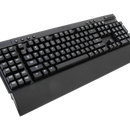Introduction: Repair Household Bulb LED GLS
In general the standard household LED GLS (General Lighting Service) bulb has dropped in price since it's creation.
- I still have some old bulbs that I have repaired. (each time lasts about a year)
- This Instructable is more for the older type.
- Not sure if it will work for the Intelligent Bulbs (I don't have any), but as they are more expensive, it may be worth a try. The principle should be the same.
This Instructable is how I repaired my LED GLS Bulb.
Please note the bulbs I have, have plastic diffusers, don't try if it has a glass diffuser.
Supplies
2 LED Bulbs of similar make and type that no longer work.
Why 2 bulbs?
- One is for repair.
- One is to salvage LEDs from.
Soldering Iron of high temperature.
- Depending on the make and age of the bulb, they may be assembled slightly differently.
- Sometimes the parts are assembled on two PCBs and will need separating.
Hot plate.
- It just so happens I have made one.
- See: Tim's Hot Plate : 36 Steps (with Pictures) - Instructables
Tweezers
- Things get verry hot.
- You need something to handle the hot stuff.
Sharp Knife
- A Sharp Knife may aid the removal if the diffuser from the base of the bulb housing.
Spudger
- A Spudger may also may aid the removal if the diffuser from the base of the bulb housing.
- Also the Top Plate may also need prising out.
Solder Paste
- If your lucky you may not need this, It all depends on how much solder stays with the LED and Plate.
- It's handy to top up the amount of solder under the LED.
- Soo little is needed.
Silicone Glue
- Best to use silicone if you want to replace the diffuser, bulbs get quite warm.
Step 1: What LEDs Are Inside
The LEDs inside a bulb are high-powered LEDs.
- Depending on the manufacture, not all makes may use the same voltage.
- They could be 6, 9 or 18 volts.
I like to keep things simple.
- So it is best if you have the same make and model Bulbs you salvage to repair another.
- That way you will be swopping same for same.
- If you bought a few bulbs at the same time, chance is all your bulbs are the same.
Step 2: Remove Diffuser
To remove the Diffuser I ran a sharp knife in the joint to free as much as I could.
- The knife will not penetrate much due to the shape of the joint.
It was basically brute force to brake the diffuser away from the base.
Step 3: Remove Top Plate
To remove the Top Plate may differ from make to make.
- Some may have all the components on the top plate and have only the two wires from the two terminals pushed through.
- The one I have has the main components on a separate PCB behind the Top Plate. One end of which came through the top plat and soldered in two places.
Which ever way it is connected, the connection needs to be removed.
- The top plate will most probably be a press-fit into the base.
- The top plate my need prizing from the base.
Note!
If doing this for the first time, you should have 2 failed bulbs.
- Therefore you can be quite destructive dismantling the first one.
- It's only the LEDs on the top plate you are saving.
- Once the first one is dismantled you will have a better idea on how to dismantle the you are going to repair.
Step 4: Swap Out the Bad LED
The most common reason for a bulb not to work is: One of the LEDs inside has failed.
- The Bulbs I have, have seven LEDs.
- That means there are still six good ones inside a bulb.
- The first top plate is good for repairing the next six bulbs.
Usually identifying the bad LED is easy.
- The LED will have a burnt back dot near the middle of it.
Once you have dismantled the second bulb, you should have two top plates.
- One is for salvaging parts.
- One is for Repair.
Place the two top plates on a "Hot Plate", I set the temperature to about 200 - 250 °C.
- Once you are able to remove the bad LED, remove it.
- Take a good LED from the op Plat you are salvaging the parts from and replace the Bad LED you removed.
Do all the a above on the "Hot Plate" quickly.
- Take note of the orientation of the LEDs, LEDs are polarized and should be placed only one way.
- As soon as you are done, remove the Top Plates from the "Hot Plate", and leave to cool.
Save the Top Plate you remove the LED from.
- It should be good for repairing 5 more bulbs.
Note!
If you think the LED needs replenishing with solder, add a little during the process.
Step 5: Put It All Back Together
Just do the reverse you did to take your bulb apart.
- I used silicone to glue the diffuser back to the base.
- Silicone should be good for the temperature bulbs get and its easier to remove the diffuser next time.
It was about a year before my first repair needed doing again.

Participated in the
Fix It Contest













